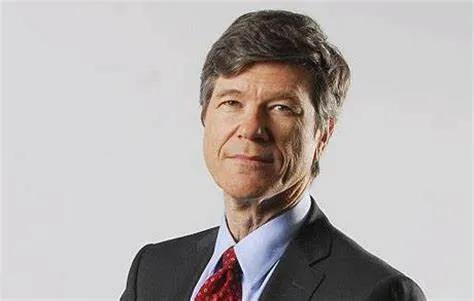Elvis Aaron (or Arona) Presley (January 8, 1935 – August 16, 1977) was one of the most popular American singers of the 20th
century. A cultural icon, he is widely known by the single name Elvis. He is often referred to as the "King of Rock and Roll" or
simply "the King".
Born in Tupelo, Mississippi, Presley moved to Memphis, Tennessee, with his family at the age of 13. He began his career there in
1954 when Sun Records owner Sam Phillips, eager to bring the sound of African American music to a wider audience, saw in Presley
the means to realize his ambition. Accompanied by guitarist Scotty Moore and bassist Bill Black, Presley was one of the
originators of rockabilly, an uptempo, backbeat-driven fusion of country and rhythm and blues. RCA Victor acquired his contract in
a deal arranged by Colonel Tom Parker, who would manage the singer for over two decades. Presley"s first RCA single, "Heartbreak
Hotel", released in January 1956, was a number one hit. He became the leading figure of the newly popular sound of rock and roll
with a series of network television appearances and chart-topping records. His energized interpretations of songs, many from
African American sources, and his uninhibited performance style made him enormously popular—and controversial. In November 1956,
he made his film debut in Love Me Tender.
Conscripted into military service in 1958, Presley relaunched his recording career two years later with some of his most
commercially successful work. He staged few concerts, however, and, guided by Parker, proceeded to devote much of the 1960s to
making Hollywood movies and soundtrack albums, most of them critically derided. In 1968, after seven years away from the stage, he
returned to live performance in a celebrated comeback television special that led to an extended Las Vegas concert residency and a
string of profitable tours. In 1973, Presley staged the first concert broadcast globally via satellite, Aloha from Hawaii, seen by
approximately 1.5 billion viewers. Prescription drug abuse severely compromised his health, and he died suddenly in 1977 at the
age of 42.
Presley is regarded as one of the most important figures of 20th-century popular culture. He had a versatile voice and unusually
wide success encompassing many genres, including country, pop ballads, gospel, and blues. He is the best-selling solo artist in
the history of popular music. Nominated for 14 competitive Grammys, he won three, and received the Grammy Lifetime Achievement
Award at age 36. He has been inducted into four music halls of fame.
Commercial breakout and controversy (1956–58)
First national TV appearances and debut album
On January 10, 1956, Presley made his first recordings for RCA in Nashville. Extending the singer"s by now customary backup of
Moore, Black, and Fontana, RCA enlisted pianist Floyd Cramer, guitarist Chet Atkins, and three background singers, including
Gordon Stoker of the popular Jordanaires quartet, to fill out the sound. The session produced the moody, unusual "Heartbreak
Hotel", released as a single on January 27.Parker finally brought Presley to national television, booking him on CBS"s Stage Show
for six appearances over two months. The program, produced in New York, was hosted on alternate weeks by big band leaders and
brothers Tommy and Jimmy Dorsey. After his first appearance, on January 28, Presley stayed in town to record at RCA"s New York
studio. The sessions yielded eight songs, including a cover of Carl Perkins" rockabilly anthem "Blue Suede Shoes". In February,
Presley"s "I Forgot to Remember to Forget", a Sun recording initially released the previous August, reached the top of the
Billboard country chart.Neal"s contract was terminated and, on March 2, Parker became Presley"s manager.
RCA Victor released Presley"s self-titled debut album on March 23. Joined by five previously unreleased Sun recordings, its seven
recently recorded tracks were of a broad variety. There were two country songs and a bouncy pop tune. The others would centrally
define the evolving sound of rock and roll: "Blue Suede Shoes"—"an improvement over Perkins" in almost every way", according to
critic Robert Hilburn—and three R&B numbers that had been part of Presley"s stage repertoire for some time, covers of Little
Richard, Ray Charles, and The Drifters. As described by Hilburn, these "were the most revealing of all. Unlike many white artists
... who watered down the gritty edges of the original R&B versions of songs in the "50s, Presley reshaped them. He not only
injected the tunes with his own vocal character but also made guitar, not piano, the lead instrument in all three cases." It
became the first rock and roll album to top the Billboard chart, a position it held for 10 weeks.While Presley was not an
innovative instrumentalist like Moore or contemporary African American rockers Bo Diddley and Chuck Berry, cultural historian
Gilbert B. Rodman argues that the album"s cover image, "of Elvis having the time of his life on stage with a guitar in his hands
played a crucial role in positioning the guitar...as the instrument that best captured the style and spirit of this new music."
Musical style
Influences
Presley"s earliest musical influence came from gospel. His mother recalled that from the age of two, at the Assembly of God church
in Tupelo attended by the family, "he would slide down off my lap, run into the aisle and scramble up to the platform. There he
would stand looking at the choir and trying to sing with them." In Memphis, Presley frequently attended all-night gospel singings
at the Ellis Auditorium, where groups such as the Statesmen Quartet led the music in a style that, Guralnick suggests, sowed the
seeds of Presley"s future stage act:
The Statesmen were an electric combination ... featuring some of the most thrillingly emotive singing and daringly unconventional
showmanship in the entertainment world ... dressed in suits that might have come out of the window of Lansky"s. ... Bass singer
Jim Wetherington, known universally as the Big Chief, maintained a steady bottom, ceaselessly jiggling first his left leg, then
his right, with the material of the pants leg ballooning out and shimmering. "He went about as far as you could go in gospel
music," said Jake Hess. "The women would jump up, just like they do for the pop shows." Preachers frequently objected to the lewd
movements ... but audiences reacted with screams and swoons.
As a teenager, Presley"s musical interests were wide-ranging, and he was deeply informed about African American musical idioms as
well as white ones (see "Teenage life in Memphis"). Though he never had any formal training, he was blessed with a remarkable
memory, and his musical knowledge was already considerable by the time he made his first professional recordings in 1954 at the
age of 19. When Jerry Leiber and Mike Stoller met him two years later, they were astonished at his encyclopedic understanding of
the blues.At a press conference the following year, he proudly declared, "I know practically every religious song that"s ever been
written."
Genres
Music scholar Paul Friedlander describes the elements of the rockabilly style, which he characterizes as "essentially ... an Elvis
Presley construction", that the singer and his band mates developed at Sun Records: "the raw, emotive, and slurred vocal style and
emphasis on rhythmic feeling [of] the blues with the string band and strummed rhythm guitar [of] country". Moore"s guitar solo in
"That"s All Right", the group"s first record, "a combination of Merle Travis–style country finger-picking, double-stop slides
from acoustic boogie, and blues-based bent-note, single-string work, is a microcosm of this fusion."
At RCA, Presley"s rock and roll sound grew distinct from rockabilly with group chorus vocals, more heavily amplified electric
guitars and a tougher, more intense manner. While he was known for taking songs from various sources and giving them a
rockabilly/rock and roll treatment, he also recorded songs in other genres from early in his career, from the pop standard "Blue
Moon" at Sun to the country ballad "How"s the World Treating You?" on his second LP to the blues of "Santa Claus Is Back In Town".
In 1957, his first gospel record was released, the four-song EP Peace in the Valley. Certified as a million seller, it became the
top-selling gospel EP in recording history. Presley would record gospel periodically for the rest of his life.
After his return from military service in 1960, Presley continued to perform rock and roll, but the characteristic style was
substantially toned down. His first post-Army single, the number one hit "Stuck on You", is typical of this shift. RCA publicity
materials referred to its "mild rock beat"; discographer Ernst Jorgensen calls it "upbeat pop". The modern blues/R&B sound
captured so successfully on Elvis Is Back! was essentially abandoned for six years until such 1966–67 recordings as "Down in the
Alley" and "Hi-Heel Sneakers". The singer"s output during most of the 1960s emphasized pop music, often in the form of ballads
such as "Are You Lonesome Tonight?", a number one in 1960. While that was a dramatic number, most of what Presley recorded for his
movie soundtracks was in a much lighter vein.
While Presley performed several of his classic ballads for the "68 Comeback Special, the sound of the show was dominated by
aggressive rock and roll. He would record few new straight-ahead rock and roll songs thereafter; as he explained, they were "hard
to find". A significant exception was "Burning Love", his last major hit on the pop charts. Like his work of the 1950s, Presley"s
subsequent recordings reworked pop and country songs, but in markedly different permutations. His stylistic range now began to
embrace a more contemporary rock sound as well as soul and funk. Much of Elvis In Memphis, as well as "Suspicious Minds", cut at
the same sessions, reflected his new rock and soul fusion. In the mid-1970s, many of his singles found a home on country radio,
the field where he first became a star.
Vocal style and range
Music critic Henry Pleasants observes that "Elvis Presley has been described variously as a baritone and a tenor. An extraordinary
compass ... and a very wide range of vocal color have something to do with this divergence of opinion." He identifies Presley as a
high baritone, calculating his range as two octaves and a third, "from the baritone low G to the tenor high B, with an upward
extension in falsetto to at least a D-flat. Presley"s best octave is in the middle, D-flat to D-flat, granting an extra full step
up or down." In Pleasants" view, his voice was "variable and unpredictable" at the bottom, "often brilliant" at the top, with the
capacity for "full-voiced high Gs and As that an opera baritone might envy." Scholar Lindsay Waters, who figures Presley"s range
as two and a quarter octaves, emphasizes that "his voice had an emotional range from tender whispers to sighs down to shouts,
grunts, grumbles and sheer gruffness that could move the listener from calmness and surrender, to fear. His voice can not be
measured in octaves, but in decibels; even that misses the problem of how to measure delicate whispers that are hardly audible at
all." Presley was always "able to duplicate the open, hoarse, ecstatic, screaming, shouting, wailing, reckless sound of the black
rhythm-and-blues and gospel singers," writes Pleasants, and also demonstrated a remarkable ability to assimilate many other vocal
styles.







